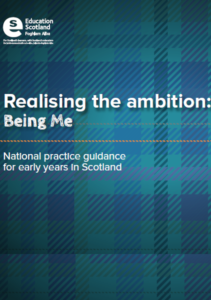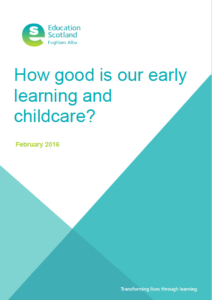p83
Practitioners in high quality provision: highly value and promote child initiated experiences and provide spaces to capitalise on children’s interests and motivation. They tune in to child initiated activity and sensitively intervene to extend children’s inquiry, problem solving and thinking skills…and, they enable children to lead their own learning, including planning projects and solving their own problems”
Examine how practitioners in your setting enable “children`s inquiry, problem solving and thinking skills” through their interactions and through continuous provision.
- What elements of practitioner interactions are key? i.e open ended questioning, “I wonder…” statements.
- What systems/routines do you have in place for practitioners to enable child-led learning in all environments in the setting?
- What opportunities do the children have in your setting to explore and experiment?
- How do practitioners facilitate children when “things go wrong”, allowing failures to happen as part of a discovery process?
p76
Numeracy and mathematical learning begins at birth and is evident throughout a child’s life experiences Numeracy and mathematical learning can be found in all aspects of the curriculum and all areas of the setting Numeracy and mathematical experiences should weave, build and grow children’s interests, vocabulary and knowledge Numeracy learning is enhanced by adults who use purposeful mathematical language when carrying out experiences Numeracy and mathematical learning should be actively encouraged by providing different materials in different contexts to encourage opportunities for exploration, enquiry and problem solving.
What opportunities do children have in your setting to develop exploration, enquiry and problem-solving skills?
What is the first small step that you could take to make a sustainable improvement and have impact on learning opportunities?
What long term improvement plans do you think need to be in place? Develop a clear strategic action plan for moving forward in developing STEM.



